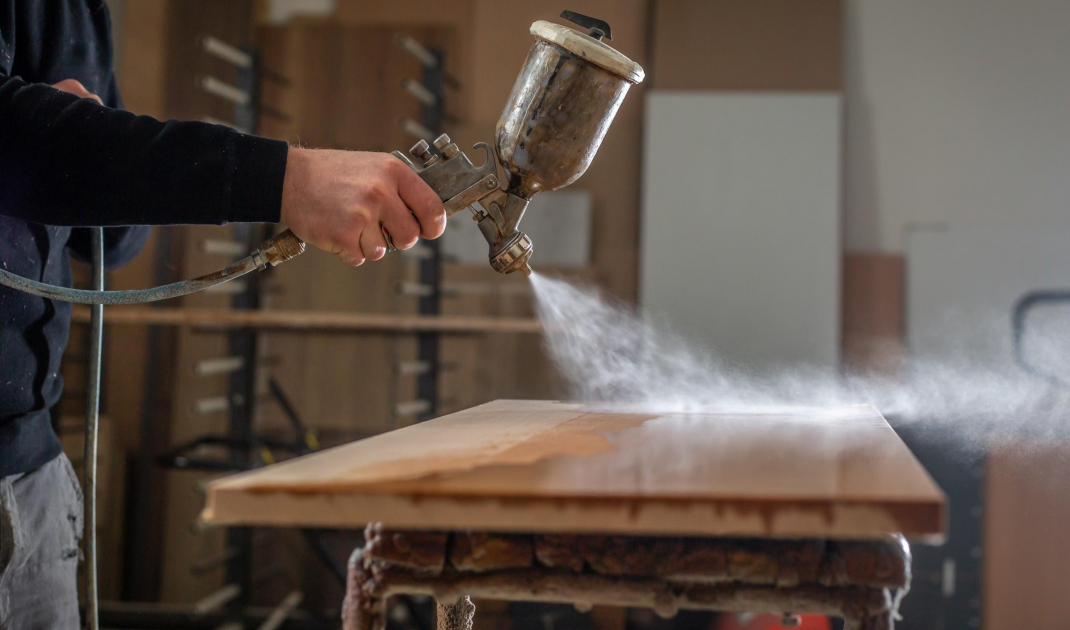Natural wood is beautiful, classic, versatile and blends perfectly with lush garden greenery. However, it has one, but quite significant, disadvantage. If you want it to look beautiful for years to come, you should make sure that it is properly protected and impregnated. How can you protect a wooden terrace and small garden architecture so that it always looks impressive?
Impregnation of wood - where to start?
Wood in the garden is exposed to harmful atmospheric factors, such as harsh sun, rain, snow or frost. That's why it's so important to focus on properly protecting the surface of wooden elements in your garden. Choosing the right product will be key, but so will proper preparation of the material. Before protecting and impregnating, it should be thoroughly cleaned.
Remove dust and dirt from the surface of the wood first. If the boards from which the terrace or other elements are made are grooved, pay particular attention to removing dirt accumulated in the grooves. Once the wood is clean, sand the outer layer gently. Thus prepared, the surface will be ready for re-protection.
What use to protect a wooden terrace and other wood elements?
If you want to effectively protect your terrace, there are several options. Which of them will be the best? It all depends on what effect you want to achieve. Learn about the most popular solutions used to protect wooden terraces or other elements of garden architecture.
Wood varnish
Wood varnish does not penetrate deep into the material, but forms a thin film on it, which protects the surface of the wood from damage and harmful agents. You can choose a transparent or semi-transparent varnish, which will not obscure the natural grain of the wood, or bet on an opaque varnish, which will allow you to create a uniform coating in any color you choose. In stores you will find varnishes with a satin, matte, semi-matte or gloss finish, so you will be able to 100% match the appearance of wooden elements to the arrangement of the entire garden. Varnish allows you to protect the wood surface for up to 3-4 years. After this time, you need to repeat the protective measures.
Wooden surfaces will look beautiful for many years if they are properly protected
Photo by Max Harlynking © Unsplash
Varnish stain for wood
Varnish stain is a transparent or semi-transparent wood preservative that beautifully enhances the natural grain of wood. It is a preparation that enhances the visual qualities of the wood, but protects its surface to a slightly lesser degree than a durable and hard varnish. If you want to achieve a similar level of protection, after cleaning and sanding the wood, and before applying varnish stain, cover its surface with a special impregnator that will strengthen the surface of the wood and improve its durability.
Varnish stain is available in many shades that can emphasize the natural color of the wood or completely change its appearance. When choosing a product, pay attention to whether it is intended for outdoor use. Such varnish stains should be waterproof and at the same time vapor-permeable. Varnish stain will work well for protecting wooden fences, railings or for painting wooden facade elements.
Wood oil
A product that allows you to maintain and emphasize the effect of natural, raw wood is oil for impregnation. Oiling is the oldest way to preserve and impregnate wooden surfaces, which is still successfully used today. Wood oils are made on the basis of natural ingredients that penetrate into the structure of the wood, without forming an additional layer on its surface. The oil brings out the natural beauty of the wood and protects it not only on the inside, but also from the outside. However, it is worth remembering that oils wash out quite quickly, so the process of oiling, for example, decking boards should be repeated at least once a year.
When to impregnate and protect wood?
Wondering when to impregnate your wood decking? There are two schools - according to one of them, it is best to do that in the spring. The other says that it would be a better idea to protect wooden surfaces in autumn, before the harsh winter arrives. Which one should you choose? If you use oil to protect your terrace or other wooden elements, the best solution is to repeat the impregnation process twice - before and after the season. Then the wood will look beautiful in the summer, and will be further protected before winter. If, on the other hand, you use varnish or stain, which can be applied a little less frequently, you can do it before the season starts to fully enjoy the refreshed appearance of the boards .
You can protect your wooden garden landscaping in spring or fall.
Photo by Randy Fath © Unsplash
Unprotected wood will quickly begin to crumble, crack and rot. A neglected wooden terrace or fence may be beyond recovery after some time. And yet it is much easier (and cheaper!) to regularly take care of the wooden surfaces we already have, rather than to liquidate the old ones and invest in new constructions.
Are you building a house? We have more wood protection tips for you!
Compiled by:OLGA TRĘDOTA
























